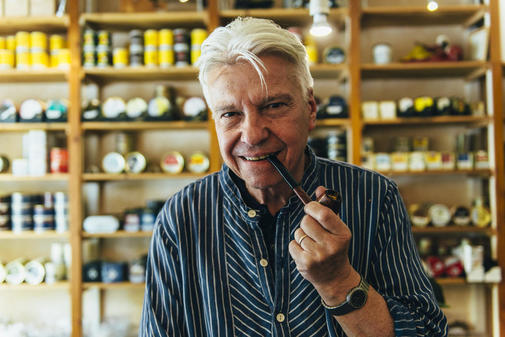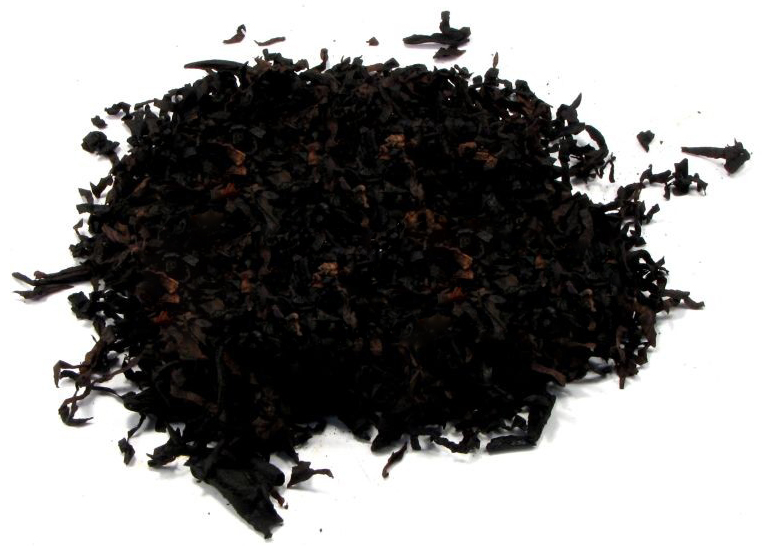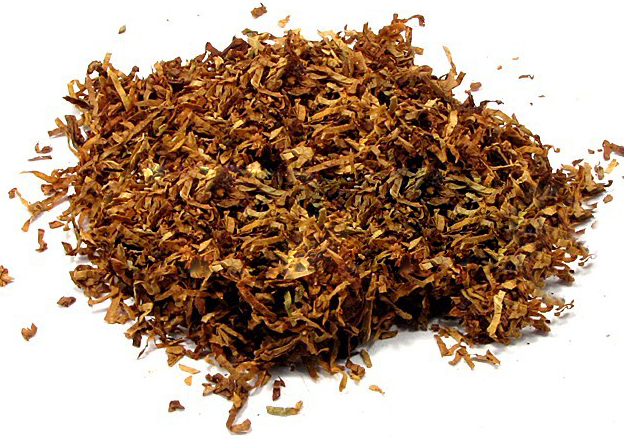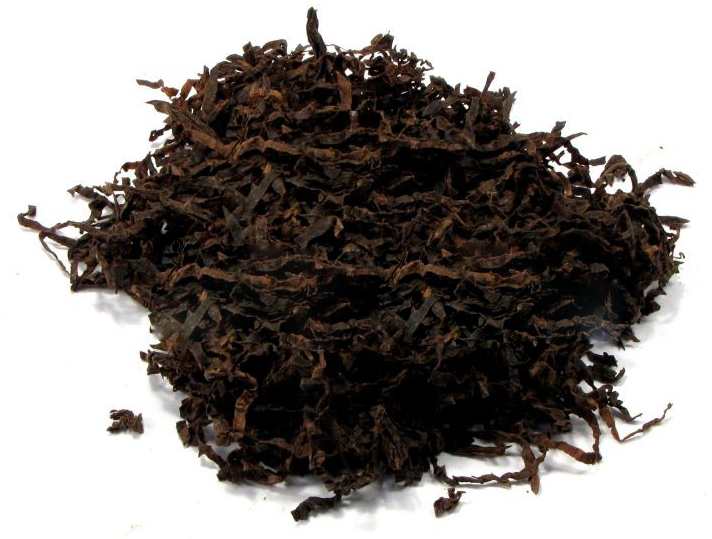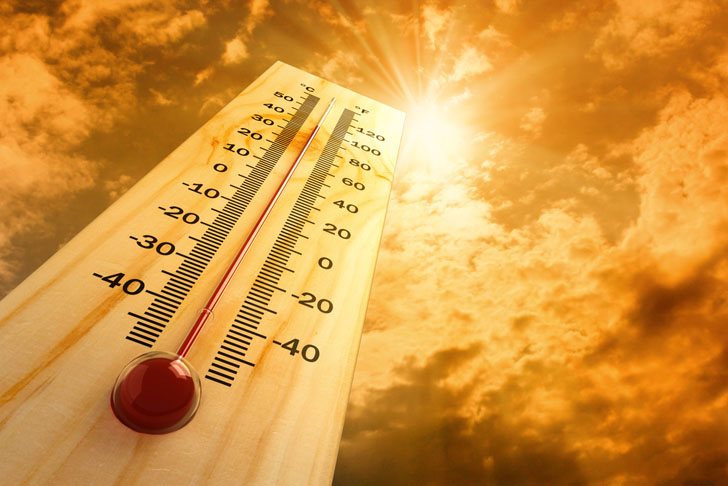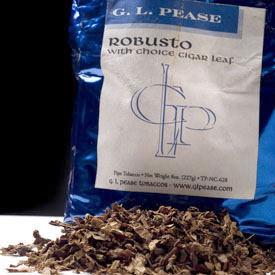Like I said in my last blogpost “Luxury tobacco from Lauenburg” this year the destination for the summer holiday of Ellen and myself was Germany. Of course I planned to visit several tobacco-shops and the number 1 on my list was the store of Herbert Motzek in Kiel, one of the major maritime centres of Germany. With a lot of you the name “Motzek” will ring a bell.. Motzek.. Motzek.. Ah! From the Strang-Curly (rope-curly)! I first heard of the existence of that tobacco from Dutch pipe smokers forum member and walking pipe and tobacco encyclopaedia Huub, who has been smoking it, to his utter delight, for years. But that excellent tobacco is not the only thing Motzek has to offer..
The store is located at a busy street with lots of traffic and in front of it beside the door the Dannebrog, the Danish flag, proudly flutters. The signal that the business of Motzek, which he operates with his from origin Danish wife Lizzie (hence the flag) since 1975, is open. Inside the store the sound of buzzing traffic becomes even less than a background noise and a relaxed atmosphere prevails. Smooth jazz music is playing through the shop and behind the counter the tobacco tins are stacked up to the ceiling. As soon as I saw Herr Motzek I immediately began to ramble about the Strang-Curly and ask him questions. “Easy, easy! Time enough, do you want some coffee?” Ah! The sign of an old-world tobacconist. We were placed in some soft chairs and the hot dark liquid was served. Motzek sat opposite us and took a good look at me. “An old habit, when a new customer comes in, I always ask myself, what pipe would probably look good with him. But please, fill your pipe and smoke something!”
 For me the shop has one big plus, cigarettes are nowhere to be seen! Motzek fulfils the wishes of smokers who smoke for their enjoyment. In 1978 he received a license for (pipe) tobacco production (recognizable by German tax number 12502) and is the only tobacconist in Germany who produces his own tobacco. Well, that is not entirely true, Herr Motzek does not produce tobacco himself. In a factory in a small town just a couple of kilometres outside of Kiel the entire range of Motzek tobaccos is made by his wife Lizzie. “She has acquired loads of knowledge at seminars and trainings, that is why I leave the mixing to her. However, for the final end control I take over again because I want to exactly know what I am selling.” In addition to the finest cigars from around the world in one of the largest walk-in humidors of Schleswig-Holstein, the shop holds a wide range of pipes. Currently about 1000 pieces. But there is something special. Not only can you buy pipes from well known manufacturers like Winslow (a personal friend of Motzek), Peterson, and Vauen but you can also purchase a real “Motzek”. Herbert Motzek is the only pipe maker in Kiel and one of only a few in Schleswig-Holstein.
For me the shop has one big plus, cigarettes are nowhere to be seen! Motzek fulfils the wishes of smokers who smoke for their enjoyment. In 1978 he received a license for (pipe) tobacco production (recognizable by German tax number 12502) and is the only tobacconist in Germany who produces his own tobacco. Well, that is not entirely true, Herr Motzek does not produce tobacco himself. In a factory in a small town just a couple of kilometres outside of Kiel the entire range of Motzek tobaccos is made by his wife Lizzie. “She has acquired loads of knowledge at seminars and trainings, that is why I leave the mixing to her. However, for the final end control I take over again because I want to exactly know what I am selling.” In addition to the finest cigars from around the world in one of the largest walk-in humidors of Schleswig-Holstein, the shop holds a wide range of pipes. Currently about 1000 pieces. But there is something special. Not only can you buy pipes from well known manufacturers like Winslow (a personal friend of Motzek), Peterson, and Vauen but you can also purchase a real “Motzek”. Herbert Motzek is the only pipe maker in Kiel and one of only a few in Schleswig-Holstein.
 Together with the opening of his business Motzek learned the craft of pipemaking from Viggo Nielsen in Danish town of Faaborg. “I did not only wanted to sell pipes, I also wanted to know how they are made.” says the trained stained-glass painter (his original profession). The thought behind it was originally that Motzek could offer his customers a low-cost repair service without long waits. From that the pipe making has grown. “At some point I was ready, so I dared to offer my pipes for sale”. 6 to 10 hours, from start to finish and nearly 80 individual steps it takes to produce a pipe in his small workshop. Motzek manufactures about 40 to 50 pipes per year, mostly on order. “First the pipe should smoke technically perfect, second comes the design that can extra delight a customer.” says the 69 year old. Even if the design is of secondary importance, the fact is that the pipes must smoke well and look good. So each piece of briar Motzek takes into his own hands in order to “read it”. To look closely at the wood and its grain before going to work. And sometimes it brings out so much that it is difficult for him to sell the pipe. “I have a pipe that I am working on for almost 13 years. That is perhaps my masterpiece. It has a perfect birds eye but I dare not properly complete it, because there is a small chance it might break..” Motzek gets a lot of recognition and positive reactions from his customers. For him the joy of a customer when he smokes a Motzek-made pipe or tobacco means almost more than the money he gets for his work.
Together with the opening of his business Motzek learned the craft of pipemaking from Viggo Nielsen in Danish town of Faaborg. “I did not only wanted to sell pipes, I also wanted to know how they are made.” says the trained stained-glass painter (his original profession). The thought behind it was originally that Motzek could offer his customers a low-cost repair service without long waits. From that the pipe making has grown. “At some point I was ready, so I dared to offer my pipes for sale”. 6 to 10 hours, from start to finish and nearly 80 individual steps it takes to produce a pipe in his small workshop. Motzek manufactures about 40 to 50 pipes per year, mostly on order. “First the pipe should smoke technically perfect, second comes the design that can extra delight a customer.” says the 69 year old. Even if the design is of secondary importance, the fact is that the pipes must smoke well and look good. So each piece of briar Motzek takes into his own hands in order to “read it”. To look closely at the wood and its grain before going to work. And sometimes it brings out so much that it is difficult for him to sell the pipe. “I have a pipe that I am working on for almost 13 years. That is perhaps my masterpiece. It has a perfect birds eye but I dare not properly complete it, because there is a small chance it might break..” Motzek gets a lot of recognition and positive reactions from his customers. For him the joy of a customer when he smokes a Motzek-made pipe or tobacco means almost more than the money he gets for his work.
 When asked if he had famous people in his store he nods. “Oh yes, Sigfried Lenz, Vanessa Mae, Herbert Wehner, Vicky Leandros, Blacky Fuchsberger… Motzek thinks and sighs wistfully. “I had so many customers in this store. Especially creative people took on pipe smoking. The looking into the smoke, slowly sipping the pipe, the thought and consideration process. That has inspired artists.” says Motzek philosophically. In Berlin’s trendy pubs young hipsters transport pipes in their jute bags back and forth. But whether this trend also goes for the rest of the country? Kiel certainly has not been reached yet. Motzek is increasingly relying on his regular customers. “Every time pipe smoking is a new trend, but it is also politically incorrect. Why do many public persons smoke in secret? The times when Helmut Kohl (former Chancellor of Germany) was still to be seen with his pipe on the election poster are long gone. Once the pipe was a symbol of reliability and dependability. Today society is health conscious and keeps on doing fitness into old age. The pipe does not fit with that.” With his 69 years Herbert Motzek thinks harder and harder about quitting. Only one problem, “I can let go so badly.”
When asked if he had famous people in his store he nods. “Oh yes, Sigfried Lenz, Vanessa Mae, Herbert Wehner, Vicky Leandros, Blacky Fuchsberger… Motzek thinks and sighs wistfully. “I had so many customers in this store. Especially creative people took on pipe smoking. The looking into the smoke, slowly sipping the pipe, the thought and consideration process. That has inspired artists.” says Motzek philosophically. In Berlin’s trendy pubs young hipsters transport pipes in their jute bags back and forth. But whether this trend also goes for the rest of the country? Kiel certainly has not been reached yet. Motzek is increasingly relying on his regular customers. “Every time pipe smoking is a new trend, but it is also politically incorrect. Why do many public persons smoke in secret? The times when Helmut Kohl (former Chancellor of Germany) was still to be seen with his pipe on the election poster are long gone. Once the pipe was a symbol of reliability and dependability. Today society is health conscious and keeps on doing fitness into old age. The pipe does not fit with that.” With his 69 years Herbert Motzek thinks harder and harder about quitting. Only one problem, “I can let go so badly.”
The fact that a visit to the store for customers is not “just” shopping almost goes without saying. Things are not “just” bought. There is conversation, there is smoking going on and there are discussions on equal terms. But many customers Motzek does not know personally, a sign of the times. Even on the Internet he sells his wares to customers throughout Germany, The Netherlands, England, the Mediterranean region and several other countries around the world even as far away as Dubai. Asked about the health hazards of smoking Herbert Motzek responds with a sly smile with a quote from Swiss-German physician Paracelsus (1493 – 1541): “Dosis facit venenum. All things are poison. Only the dose makes that a thing is not a poison.”
At the shop I bought two of Motzek’s house-tobaccos. Of course the well known Strang-Curly but also an English blend: Herbst 84. I already knew the Strang-Curly, I received samples from forum-member Smoking Rob from both the cut and uncut version for which I am still grateful! Here is a review of the two blends.
 Package/tin description (translated from German):
Package/tin description (translated from German):
Strang-Curly: A strang (rope), a speciality, rare to find nowadays: fine virginias filled with dark burley are spun together with a spicy but mild perique. This speciality is for connoisseurs, we deliver it cut or uncut. The strang is packed in a large sealed zip-lock bag of 100 gram.
Herbst 84: The classic amongst the English mixtures. Fine oriental tobaccos, bright light and red virginias are rounded off with spicy latakia. The slow cool burn guarantees a high smoking pleasure. The mixture is packed in 50 gram pouches and sealed zip lock bags of 100 and 200 gram.
 Contents/cut:
Contents/cut:
Strang-Curly: Virginias, burley and perique. It is a rope tobacco which is a delight to look at. In general the core of the rope is a bit darker with lighter leaves around it with traces of tobacco-stems in between.
Herbst 84: Bright light and red virginias, oriental tobaccos and latakia. Remarkably Motzek still has some Syrian latakia, although not much, only 20 kg is left from his once large stock. “I can’t get it any more these days..” he sighs. When I asked if Syrian latakia was used in Herbst 84 he was unsure. “My wife better knows the exact ingredients of the blends. But if it is in, it only will be a couple of strands..” It is a ribbon cut with a beautiful presentation of light and dark tobacco strands.
 Smell from the pouch/bag:
Smell from the pouch/bag:
Strang-Curly: An earthy but sweet and inviting smell comes from the strang. Hay and figs with a slightly dark nutty undertone are pleasing my spoiled nostrils.
Herbst 84: When I opened the pouch I immediately thought that the name of the blend was well chosen. It brings forth a pleasant, earthy and slightly salty peaty smell that is strongly reminiscent of autumn leaves, forest floor and freshly harvested fields. In my head it smelled like a mix of Samuel Gawith’s Squadron Leader and Pipes & Cigar’s Magnum Opus. Needles to say, my anticipation grew.
 Taste:
Taste:
Strang-Curly: A few puffs after lighting the pipe-bowl the mildly sweet virginias come forth upon a broad earthy, yeasty and slightly nutty layer. The flavour is complex but almost unbelievable very well balanced. It grabs your attention and basically stays the same throughout the bowl. I would almost say it has a signature taste, once you smoked it you can recognize it blindfolded a next time. Towards the middle of the bowl the flavours broaden and become a thoroughly enjoyable symphony of natural tobaccos. In short I would say, think of toasted bread with some walnuts on it and a small splash of honey. I can’t really detect the perique but I guess it adds some zest to the strang. At the end of the bowl an ashy taste begins to appear. A messenger that the fun is almost over. Oh, I very much recommend the uncut Strang-Curly as opposed to the cut version. The taste is just, fuller, better, more intense.
Herbst 84: What can I say, like the strang this one is also unbelievable very well balanced. The smoky latakia stays in the background throughout the bowl together with the orientals and both support the dominant and sweet virginias in perfect harmony. Mid-bowl the floral orientals pop out now and then which provide interesting counter-flavours to the virginias. Towards the end of the bowl the well orchestrated blend gradually fades out into grey ash. Like with the smell I also had to think of Samuel Gawith’s Squadron Leader and Pipes & Cigar’s Magnum Opus when smoking it.
 Miscellaneous:
Miscellaneous:
Strang-Curly: The strang is wetter than Ellen when she sees me coming out of the shower.. I am used to tobaccos that are pretty moist (hello Samuel Gawith flakes) but this one requires some serious drying time. At least 2 to 3 hours. Or less if you nick the hair-dryer of your friend/girlfriend. I tend to rub out the cut coins, it makes packing the bowl easier. Nicotinewise the strang is medium, it won’t kick you off your feet but will satisfy your cravings.
Herbst 84: The blend packs and burns perfectly. Although it dries out pretty fast in the pouch. Motzek refuses to use hygroscopic agents like sorbitol, propylene glycol and glycerine to keep the tobacco wet. Only water is used to moisten the tobacco.
 Room-note:
Room-note:
Strang-Curly: Ellen has no trouble when I smoke this one inside. Although I kind of dislike the cigarette-like odour in the room the next morning.
Herbst 84: Because it is not a latakia-bomb Ellen has no objections when I smoke Herbst 84 inside. The next morning only a slight incense odour was left.
 Price:
Price:
Strang-Curly: Tobaccos made by Motzek are relatively cheap compared to other German offerings. 100 gram will only cost you €15,50 (± $17.28)
Herbst 84: A 50 gram pouch will set you back at €6,25 (± $6.97). 100 gram costs €12,- (± $13.38) and 200 gram €23,- (± $25.64).
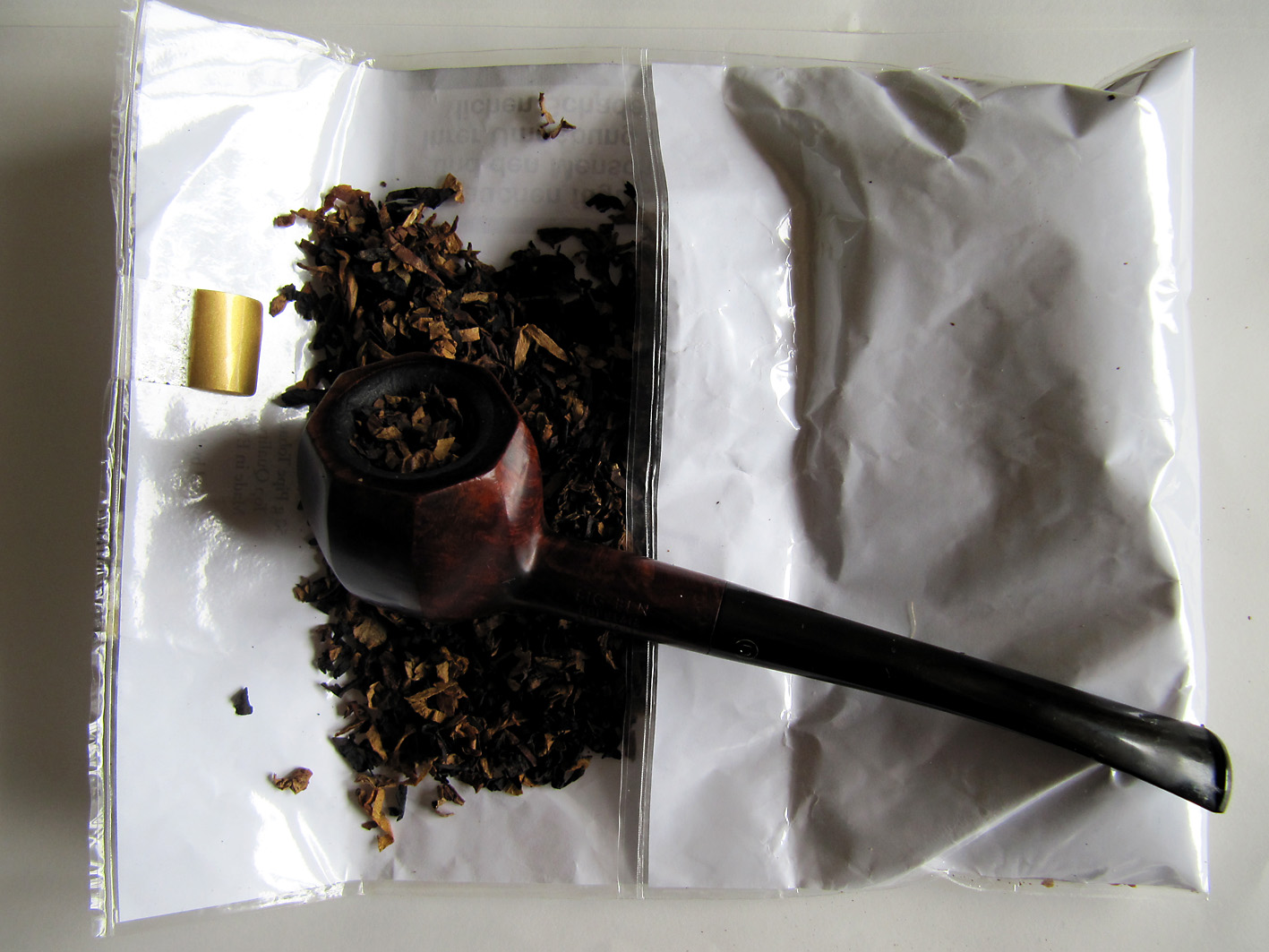 Conclusion:
Conclusion:
Strang-Curly: I congratulate Lizzie Motzek, this is the best rope tobacco I smoked so far. Period. It has a signature taste that does not get boring. And bear in mind that the strang I smoked was pretty fresh. Imagine what a few years of ageing will do. Ooooh yeah…
Herbst 84: For me this is one of the best latakia-blends made on Europe mainland. It utterly surprised me in a most pleasant way. I never expected such an excellent tobacco could come out of a pouch. I will be stocking up on this one. Because it has a more than good price-quality ratio and who knows when Motzek finally decides to quit…
EDIT 01-12-2015: Sadly (for us pipe-smokers) Motzek decided to quit.. This is written (in German) on his website: After a working career of 51 years, 46 years within the industry and 40 years with my own business, I’m almost 70 now and I want to retire. I’m looking for an able successor for my unique shop (Cigar lounge, pipe repair shop, and tobacco manufacturing license) in Kiel. Interested parties please inquire per phone +49 431 554162.
EDIT 18-04-2016: Motzek’s retirement is definitive now. His website states that he will say “goodbye” Thursday 28 April 2016. However, the store is not closing down because Herbert has found a successor who will begin on 1 May. I heard that he is currently learning the ropes of making THE rope, the Strang-Curly. So I have high hopes that the legend of the Strang-Curly will continue.
EDIT 08-05-2016: The successor for Herbert Motzek is pipe-maker Thomas Darasz! He also took over the Motzek name and the tobacco tax-number needed for producing the house-blends (under which the Strang-Curly). So it looks like the future of the store is secured.

